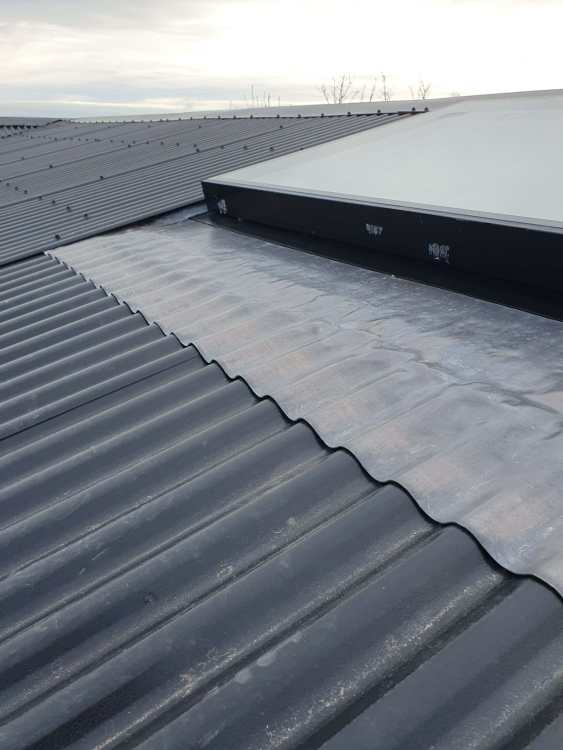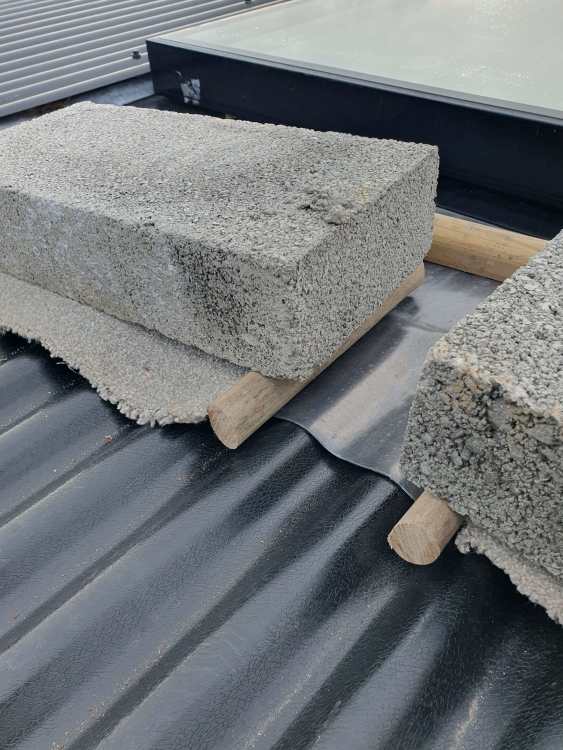
Tom
Members-
Posts
837 -
Joined
-
Last visited
Personal Information
-
Location
the rolling hills of south Devon
Recent Profile Visitors
6820 profile views
Tom's Achievements

Regular Member (4/5)
176
Reputation
-
I guess they're surface mounted?
-
Hi all, I'm finally getting our EPC done and have been told that as it stands we wont need an air permeability test, this is what the chap has written to me: "As it stands, without an air test, the property has an EPC of 99A and a DER of 1.20kgCO2/yr/m2. With an air test target of 10 the property would have an EPC of 104A and a DER of -2.15kgCO2/yr/m2, with a target of 5.0 (which is around the target the MVHR system would need in order to perform efficiently) the EPC would be 108A and a DER of -5.21kgCO2/yr/m2." I'd quite like to do without and avoid the cost, but I'd also quite like to know exactly what we've managed to achieve. Are there any other implications of not getting the test done though?
-
mesh size for external MVHR intake
Tom replied to Tom's topic in Mechanical Ventilation with Heat Recovery (MVHR)
Thanks all. Seems like 10mm pretty standard for the external intake. I'll just have to change the MVHR filter more often, to that end have bought a 5m roll of filter wool -
The C02 levels seemed to be creeping up in the bedroom for the last week, so I checked the filters on the MVHR and the inlet one was absolutely caked in crap, including lots of quite large insects. This prompted me to take a closer look at the external inlet and it seems it has a 10mm mesh covering it. Is this a bit coarse? I don't want to have to be clearing the mesh every two minutes, but then again it seems like at 10mm it lets pretty much everything through...
-
I supported our static on these: https://mystatic.co.uk/static-caravan-axle-stand-medium?gad_source=1&gad_campaignid=18389908304&gbraid=0AAAAAC5hZe7h_azbtkOUPbU3MmfJvLwm1&gclid=EAIaIQobChMI7I_f6a-1kAMVV5WDBx0SDBkeEAQYBCABEgJMhPD_BwE each placed on a concrete paving slab. Took about 30 minutes and zero movement in 4 years. Trying to level the thing by using spacers and wedges just sounds like an absolute PITA.
-
Best electric heaters for reasonable price - recommendations please
Tom replied to M-Rod's topic in Other Heating Systems
...oh and awesome first post BTW. Really hit the mark! -
Best electric heaters for reasonable price - recommendations please
Tom replied to M-Rod's topic in Other Heating Systems
Electrical resistance heating is near as damnit 100% - a tiny amount will be lost to noise. Even the heat generated in circuitry or friction in bearings is still heat at the end of the day - and will heat the room. I don't understand what you mean by "the heat that you want" - heat is heat! You miss the point re 300% efficiency - this is for heat pumps, as made clear in the posts. Very different to resistant heating. -
Apologies if I'm late to the game here, but do your walls have a DPM? Have you considered the risk of rising damp in the walls?
-
We've tried to live with the FP double drawer dishwasher and just can't get on with it - so much so that we're going to replace it. Space is limited in each of the drawers, so you can't fit things in that might have in a traditional dishwasher, and the fact that there is only one direction of spray (from the rotating bar at the bottom of each drawer) means you have to be careful with placement of dirty things and some places it just doesn't wash. Also, the inside is plastic and can get very dirty.
-
I covered our newly poured/powerfloated floor with 9mm OSB and the concrete guy nearly had a fit when I told him - he told me to take them up straight away and put woven dustsheets under the boards or the concrete would get "tattooed" by the sheet edges. Anyway, they were like that for over a year until polishing and no lines visible.
-
Stop dicking around with lasers and get a Ziplevel! https://www.groundscare-products.co.uk/ziplevel.html
-
Ah sorry, yes, cycling - gotcha. We have no buffer but a lot of pipework and thick concrete and screed to suck heat (and lose heat I guess) - so generally cycles tend to be long. We do have a low loss header if that affects things?

.jpg.c21f3ac78c9b7efd90cbdcb312744dc5.thumb.jpg.7adcad4c0e384f5ecd7d56b0618df6e5.jpg)




